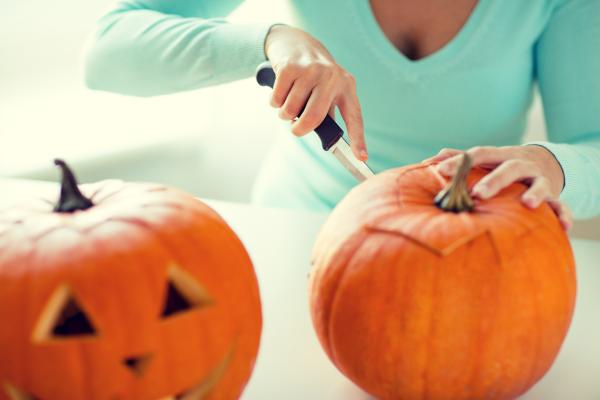
This holiday season, as tempting as it may be, don’t give the finger! Or, a hand or any part of your upper extremity, for that matter.
An uptick in catastrophes involving these body parts occurs every year as our fingers navigate the treacherous time between Halloween and Christmas. Who knew pumpkin carving and opening gifts could be such a minefield? I will still assume the risk, so if a present is en route, obviously, I can’t be ungracious.
Speaking as someone who unwittingly sliced her own finger to bone while blindly searching through luggage, I enabled a tumultuous battle between my own hand and an uncapped razor. I lost. Ugh, of note, those suckers can really bleed! And, avoidance of infection is crucial for a good recovery.
In 2009, there were 3,468,996 upper extremity injuries evaluated in U.S. emergency rooms— meaning an individual has a 1-in-88 chance in any given year. Understand this is actually an under-estimation as those that didn’t necessitate an ER visit were excluded from the study. The finger led the pack being responsible for 38.4% of those mishaps. Despite all of the wonderful things our fingers do for us, we are likely to break them, cut them, burn them, and even smash them in doors. Given that my misadventure took place in a Caribbean hotel, my story was a little more exotic than the norm. Yes, folks, the home (which includes the known finger nemesis “the slammed door”) was the most typical locale (45.4%). Sports-related and school are also among the usual suspects. (1)
According to Dr. Joshua Ratner, hand surgeon at The Hand and Upper Extremity Center of Georgia, “the hand is a fickle little machine. You have to treat it right.” It is of critical import to seek appropriate timely medical care in these situations. Dr. Ratner advises “People will always get injured. Injuries themselves can be challenging enough to treat, but delays in treatment and missed diagnoses can be a killer. That minor trauma - your mundane “jammed finger”- may actually be something far more sinister. When it is still sore the next day, when it is swollen, or when it doesn’t move well, consider a visit to a doctor to get an x-ray. Also, remember that the goal of urgent care and ER professionals is usually not to provide definitive treatment. Follow up is key. The best hand injury outcomes are often achieved by combining proper protection with timely return to movement and use, as guided by an experienced physician or therapist.”
Holiday-associated hand injuries are so common that the American Society for Surgery of the Hand (ASSH) does a public service announcement on finger lacerations each Fall. Halloween invites pumpkin carving, which can result in an all-too-real creepy looking bloody finger. Thanksgiving turkey dissecting is another rite of passage we enjoy, with scores of would be poultry surgeons flying to the ER with their fingers wrapped in dish towels.
So the party went well and it is time to clean up, be careful reaching into the murky depth of the soapy sink water, for there lurk knives and glassware waiting to take a bite out of your nimble little piggies.
Nothing says “I Love you” like a generous present encased in a tomb of shrink-wrapped plastic you have to attack with scissors and razor blade to open. You might consider calling to thank the person who gave it to you while waiting in the ER, your hand bloodied and your holiday joy run out.
You say that the real fun begins in spring? Are you planning a fiesta for Cinco de Mayo with margaritas and homemade guacamole? Let the blender blade stop spinning and take the pitcher off of the motorized base before diving in to extract that tequila-soaked ice cube that made the blade stop in the first place. And never, ever stab at an avocado pit with the tip of a knife. Like an agile ninja, that pit will deflect the knife tip sending the blade plunging toward your thumb.
When your holiday season handiwork ends with a major “thumbs down,” consider seeing a hand surgeon. Why is a specialist in hand surgery so vital to the success of regaining the structure’s ability to function? The hand often distinguishes us as human. It is used to greet. To convey warmth, support and even language. Enthusiasm and nurturing. Expresses love and tenderness. Its elaborate labyrinth of nerves, tendons and blood vessels permit musical genius, surgical prowess and masterful art. With the goal to restore as close to normal function as possible, prompt evaluation by an experienced provider is critical with all injuries, especially of the hand. Repairing damage to it is technically very challenging as it may involve repairing nerves, arteries, veins, bones, joints, tendons and ligaments. Additionally, as per Dr. Ratner, “30-50% of the outcome is determined by hand therapy and continued post-surgical monitoring.”
Dr. Ratner appreciates that “the hand says a lot about you, it tells your story.” Preserving its integrity includes steering clear of infection. The single most important way to do this is to wash out the wound with water. Hold pressure on it to stop the bleeding until proper care by a physician takes place. Be sure your tetanus is current and take the antibiotics exactly as prescribed, if warranted. Consider seeing a hand specialist especially if the healing doesn’t seem to be progressing as expected.
Now, go enjoy life with cautious reckless abandon and return to read the continuation of this piece where we further explore adult occupational and pediatric upper extremity trials and tribulations.
SOURCES:
(1) Ootes D, Lambers KT, Ring DC. The epidemiology of upper extremity injuries presenting to the emergency department in the United States. Hand (NY). 2012;7(1):18-22.



